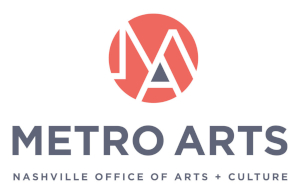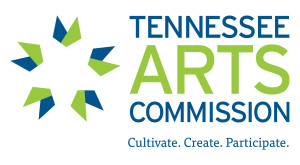The NCMS’s Opening Night:
Watercolor, Reverence, and some Drama.

The Nashville Chamber Music Society (NCMS) presented an outstanding opening-night performance of their current season featuring cellist and NCMS founder MaryGrace Bender, flutist Danielle Maeng, and pianist Brendan Jacklin (NCMS, performer’s bios, and other relevant links listed are below). In my short conversation with the trio after the performance, Bender gave an account—charmingly reiterated in “Our Story” on the NCMS website—of what ultimately led to the group’s formation: “I got to grow up in this wonderful town [Nashville] and fell in love with music because of the beauty it brings to the world and the sweet community that comes along with it.” Bender’s simple and refreshing explanation reminds us that such ideas—ones often considered naïve—can ignite and grow, ultimately having a far-reaching positive effect on communities. Bender had a vision of bringing music she loves to her community, and the group’s first cozy and unlikely performance venues—unlikely for “classical” chamber music—were local coffee shops. However, NCMS performances eventually advanced to include more significant, formal performance spaces. According to the group’s website, NCMS is a 501(c)(3) nonprofit organization partnering with local schools, retirement homes, homeless shelters, and other venues “to bring artistic excellence and beautiful experiences” to Nashville and surrounding areas.
On Friday evening of October 27, 2023, the NCMS did just that! They brought to their community a beautiful musical experience at Covenant Presbyterian Church in Nashville where they are currently in residence. The church’s expansive and cathedralesque sanctuary was utilized as a backdrop for the performance since its footprint was modified taking place within the choir—or the portion of the sanctuary just behind the alter—with the audience facing out toward its airy nave—or the main section where the congregation sits. The audience’s closer proximity to the evening’s performers provided a more enlivening and intimate experience—perhaps like a variation of a similar proximity in coffee shops—within such a voluminous space.

First, on their program, NCMS performed Philippe Gaubert’s (1879–1941) Trois Aquarelles—or Three Watercolors—a trio for flute, cello, and piano that is exemplary of the general soundscape of French art music in the early twentieth century. Gaubert, a flutist, by the end of World War I, was a fixture in 1920s French musical life, and his Trois Aquarelles is evidence of his being influenced by composer contemporaries such as Claude Debussy (1862–1918), Gabriel Fauré (1845–1924), and Maurice Ravel (1835–1937). Just as French impressionistic painters used watercolors, allowing lines on canvas to bleed into one another, obscuring texture, so does the opening of the first movement, “Par un clair matin” (On a Clear Morning). In the performance, Jacklin produced a beautiful foundation of aural color consisting with washes of transformational harmonies while Maeng and Bender entered, playing a rhythmically complex unison melody.
The blending between the three performers was impeccable, and their individual timbres became less exclusively discernable, giving a successful impression of a watercolor painting. The second movement, “Soir d’Automne” (Autumn Evening), featured exquisitely played contrapuntal lines between flute and cello, was skillfully maneuvered, requiring focused non-spoken communication between players. The third movement, “Sérénade” (Serenade), featured an expected tinge of exoticism familiar to French composers of the period. Debussy’s epiphany reached after hearing Indonesian gamelan music at an East Asian exhibit at the 1889 Exposition Universelle—better known as the 1889 Paris Exposition—changed the trajectory of the composer’s music, which further influenced the music other French contemporaries. Thus, the exotic is prominently discernable in Gaubert’s third movement here. The faster, rhythmically intricate, and virtuosic lines include simultaneous resonances of the exotic generally, hinting at sounds of East Asia and even Andalusia.

Full Circle 50, composed by Jack Heggie (b. 1961), was commissioned by Elizabeth King in 2019 to celebrate the fifty-year performing career of acclaimed flutist Carol Wincenc. The movement, “Golden,” centers on a lyrical duet between the cello and flute. Songlike—a proper description since “Golden” is said to be indicative of Heggie’s art-song style. This movement was especially fitting for the performance space; the reverent quality of “Golden” was charmingly enhanced for audiences by the spiritual iconography seen all around the church’s sanctuary. The more spritely “Travel Travail” is an aural depiction of an artist’s life. The harmonically stagnant piano ostinato Jacklin produced elicited a sense of freedom and bustle. Extended techniques used by Jacklin included knocking on the underside of the piano, signifying how artists perpetually knock on doors to find opportunities. Less to do with hummingbirds, Heggie wrote “Hummingbird” to sonically depict Raymond Carver’s poem of the same name, sounding static, introspective, and languid. Jacklin begins the “Hummingbird” by manually plucking a piano string—its opening ‘C’ pitch. The last movement, “Full Circle,” develops a musical theme using a collection of styles from earlier eras. “Full Circle,” in part, breaks from the more contemporary style of the proceeding movements using devices harkening back to the Baroque—and maybe early Classical even—such as a system of melodic and harmonic sequence. All performers showed their musical maturity and excellent silent communication skills through a gradual and culminating accelerando toward an exhilarating finish.
Regarding the Trio for Piano, Flute, and Cello by Carl Maria von Weber (1786–1826)—well, it was Weber. Credited for ushering German Romantic opera, Weber wrote ten operas, including Der Freischutz (1821) and Oberon (1826), for which he is best known. This last piece of the program was an enjoyable contrast to the Gaubert and Heggie since it features Weber’s flair for the dramatic. All performers irreproachably handled the many virtuosic sections of the piece seemingly with ease and stylistic accuracy. When preparing the Weber, Bender recalls how the performers drew the vocal style indicative of the composer’s operatic works.
Overall—a great evening; I encourage anyone to attend any one of NCMS’s performances. An upcoming performance to note will be held at the Steinway Piano Gallery on Sunday, November 12, 2023. See the NCMS website for details that this and other upcoming performances.NCMS: https://www.nashvillecms.org



